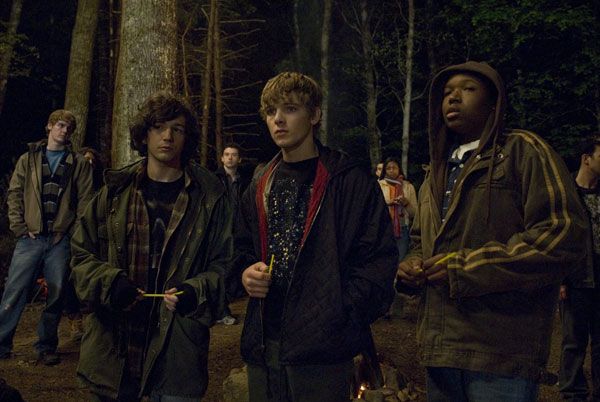Step into the surreal world of Wes Craven’s My Soul to Take if you must, but close the door behind you, lest sanity somehow slip in. Abandon all hope – or, at the very least, common sense – and prepare for a sensory experience that combines Craven’s best instincts with some of his most curiously ill-conceived.
It might be tempting to wonder where it all went wrong. What became of the lunatic inspiration behind his headiest fantasies, from his controversial, Virgin Spring-inspired 1972 debut, The Last House on the Left, to the fiendish hallucinations of his 1984 classic, A Nightmare on Elm Street? But look closely and you’ll find flashes of Craven’s macabre genius even in an effort as middling as Soul.
Few directors share his gift for twisting the mundane into the grotesque, and I say that with no small admiration. In Soul, as in the original Elm Street, a simple trip to the bathroom escalates into a waking nightmare, without a drop of blood staining the tiles. Craven is a master of injecting horror into a scene without warning, then restoring calm in a quick, sure-handed stroke.
The effect, of course, is to keep us on our toes, to remind us that safety is never more than an illusion. When Craven pulls it off, Soul – his first feature since 2005’s taut thriller Red Eye – seems alive with sinister possibilities. But lumbering dialogue, coupled with an incoherent narrative and a tacked-on climax, undermines that promise.
The story begins, as so many of Craven’s do, with the birth of a suburban legend: the Riverton Ripper, a schizophrenic serial killer who murders his pregnant wife on the night police pump him full of lead but manage to lose him anyway. Sixteen years later, he’s still missing – “The body was never found,” we are ominously informed – and the seven children born that evening, in the Massachusetts town obsessed with his memory, fear the Ripper’s return.
As surely as Freddy Krueger made a tradition of tormenting the sons and daughters of Elm Street in their dreams, the Ripper arrives on cue to slice up the kiddies, raising two obvious questions: How? And why now? Did the killer survive all those years ago, biding his time before his locustlike encore? Or is there a copycat on the loose?
Craven answers neither question satisfactorily, but what’s most galling is that he doesn’t really try. Some have described Soul as the work of an uninspired impressionist, and the point is well taken. The director seems less interested in solving the riddle of the Ripper’s rebirth than in using his story as a backdrop for creepy but disjointed vignettes.
That he doesn’t bother to make basic connections will frustrate those whose yearning for logic exceeds their thirst for fantasy blood. Soul, which was pointlessly presented in 3-D during its brief theatrical run, tries to compensate for its shortcomings with a surfeit of gore. From a talent like Craven, that’s just not enough.
EXTRAS: Craven’s audio commentary sheds little light on the thought process that produced one of the director’s most confounding screenplays, and though Universal generously serves up 20-plus minutes of deleted scenes and two disappointingly similar alternate endings, none of them does enough to untangle the director’s convoluted yarn.
Related Articles
